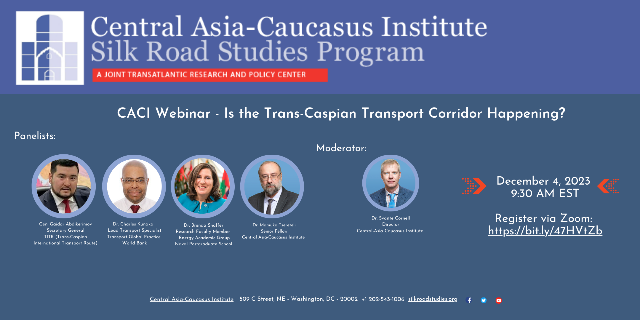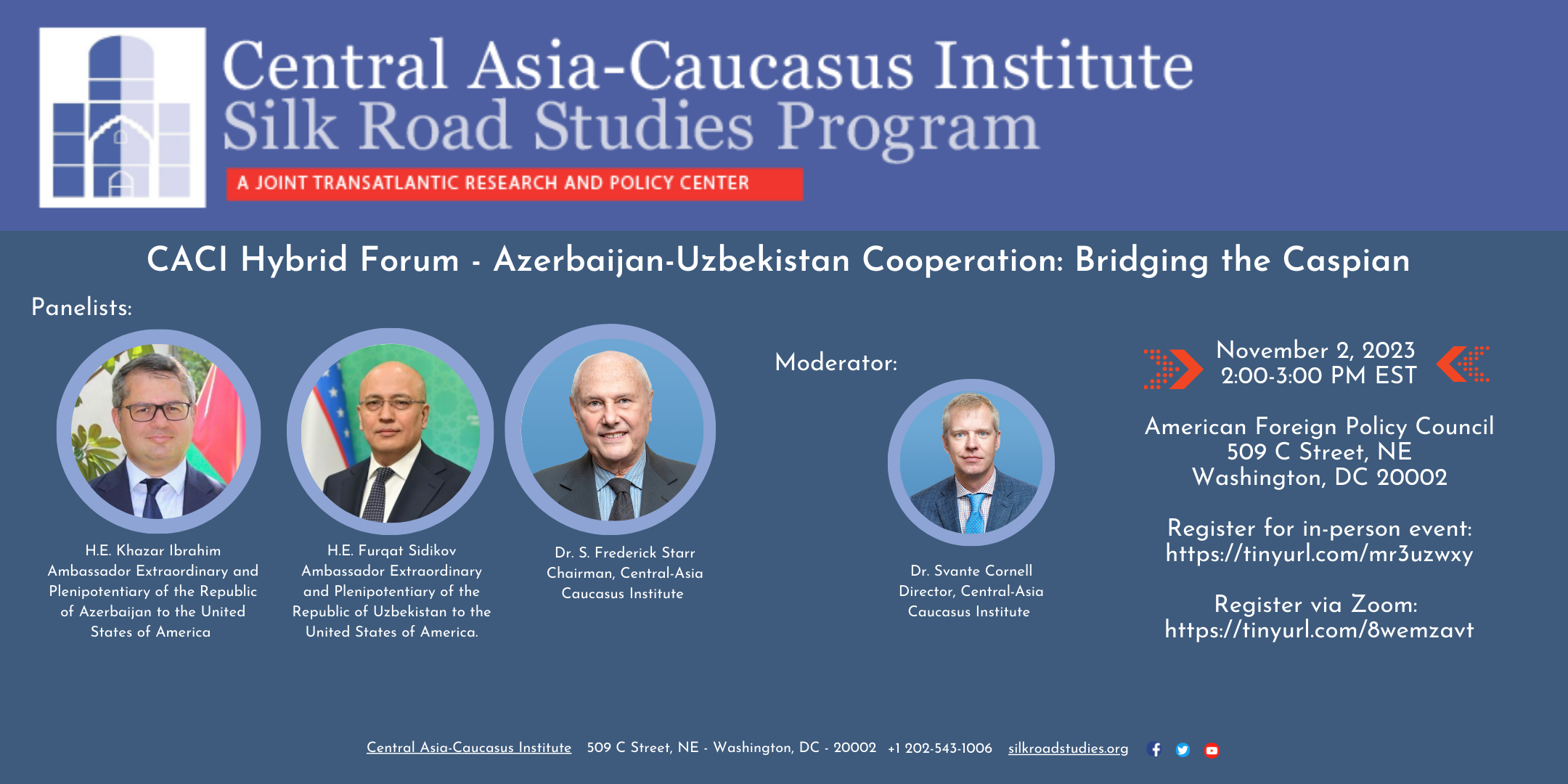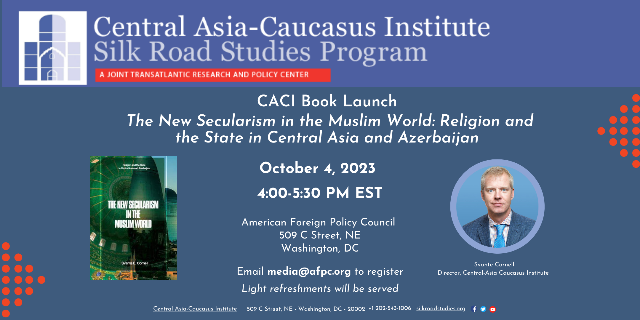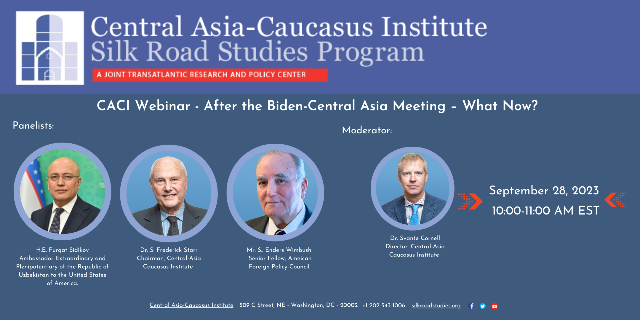Watch the 12/4 CACI Webinar - Is the Trans-Caspian Transport Corridor Happening?

The vision of a transportation corridor linking Europe to Asia through the Caucasus and Central Asia was conceived almost a soon as the USSR collapsed. However, in spite of progress, major infrastructure remains to be built for this corridor to truly matter. In the past year, geopolitical developments have spurred the states in Central Asia and the Caucasus into action. Major regional states have linked arms like never before to speed this corridor into realization. To discuss the corridor, its challenges and its implications, the Central Asia-Caucasus Institute invites you to the following web-based Forum.
PANELISTS:
- Gen. Gaidar Abdikerimov, Secretary General, TITR (Trans-Caspian International Transport Route)
- Dr. Charles Kunaka, Lead Transport Specialist, Transport Global Practice, World Bank
- Dr. Brenda Shaffer, Research Faculty Member, Energy Academic Group, Naval Postgraduate School
- Dr. Mamuka Tsereteli, Senior Fellow, CACI
MODERATOR:
- Dr. Svante Cornell, Director, Central Asia-Caucasus Institute
Watch the fall 2023 Rumsfeld Foundation Fellows' Hybrid Forum, "United We Thrive, Divided We Fall"
Watch the 11/2 CACI Hybrid Forum - Azerbaijan-Uzbekistan Cooperation: Bridging the Caspian

In recent months, Azerbaijan and Uzbekistan have concluded important agreements. This is an indication that the cooperative spirit that has developed in Central Asia is extending across the Caspian Sea to the South Caucasus as well. On November 2, CACI hosted a hybrid Forum discussing the implications of this trend for the wider region.
PANELISTS:
- H.E. Khazar Ibrahim, Ambassador Extraordinary and Plenipotentiary of the Republic of Azerbaijan to the United States of America
- H.E. Furqat Sidikov, Ambassador Extraordinary and Plenipotentiary of the Republic of Uzbekistan to the United States of America
- Dr. S. Frederick Starr, Chairman, Central Asia-Caucasus Institute
MODERATOR:
- Dr. Svante Cornell, Director, Central Asia-Caucasus Institute
Scroll down to watch the recording or click here to watch on YouTube.
10/4 CACI Book Launch: The New Secularism in the Muslim World: Religion and the State in Central Asia and Azerbaijan

Across the Muslim world, religion and politics have become increasingly mixed in the past century, with devastating consequences. But there are signs that the ascendancy of political Islam may be coming to an end. In this context, the experience of Central Asia and Azerbaijan as Muslim-majority states that insist on secular laws, courts and education is a much-overlooked model that is bound to attract greater interest. THE NEW SECULARISM is the first study of the Central Asian model in the realm of the interaction of religion and the state, which examines its characteristics as well as how it relates to other frequently touted models in the Muslim world
Join us for the book launch and a discussion of CACI director Svante Cornell's "The New Secularism in the Muslim World: Religion and the State in Central Asia and Azerbaijan."
WHEN: October 4, 2023 4:00-5:30 PM
WHERE: American Foreign Policy Council - 509 C Street, NE, Washington, DC 20002
CACI Webinar: CACI Webinar - After the Biden-Central Asia Meeting – What Now?
On September 19, President Joe Biden met with Central Asian Presidents at a C5+1 summit in New York. This marks the first time an American president has sat down with the combined leaders of this region. What will come out of this positive step in U.S. policy toward Central Asia? What should happen next? This CACI Online Forum delves into these matters.
Scroll down to watch the recording of the webinar.
Panelists:
- H.E. Furqat Sidikov, Ambassador Extraordinary and Plenipotentiary of the Republic of Uzbekistan to the United States of America
- Dr. S. Frederick Starr, Chairman, Central Asia-Caucasus Institute
- Mr. S. Enders Wimbush, Distinguished Fellow for Strategic Studies, American Foreign Policy Council
Moderator:
- Dr. Svante Cornell, Director, Central Asia-Caucasus Institute
WHEN: Thursday, September 28 - 10:00 - 11:00 AM EST


